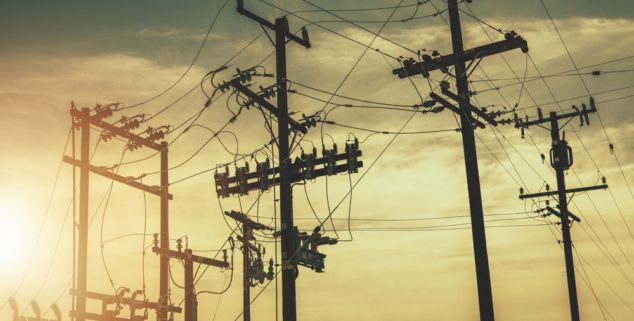News
A new state department targets California’s infrastructure
 Aged wooden power poles and high voltage infrastructure. (Photo: Virrage Images, via Shutterstock)
Aged wooden power poles and high voltage infrastructure. (Photo: Virrage Images, via Shutterstock)This summer, California created a department dedicated to stopping its strained electric grid from causing more catastrophic wildfires, and come the new year the fledgling bureaucracy will add a questionably mapped labyrinth of underground cables and pipes to its list of concerns.
The Office of Energy Infrastructure Safety (OEIS) became a stand-alone department under the the Natural Resources Agency July 1 of this year. Before that, it functioned within the Public Utilities Commission as the Wildfire Safety Division, an oversight branch created by statute in 2019.
OEIS is still fleshing itself out with energy experts, analysts, engineers, inspectors and attorneys.
Caroline Thomas Jacobs has been director of OEIS since its inception. She’s staffing up and solidifying procedures even as she continues to the work of the former PUC division.
“We had to do the moving while still operating,” said Thomas Jacobs. “It’s been kind of a heavy lift. But we’ve done it. We’ve moved over while still fulfilling our statutory responsibilities.”
OEIS is still fleshing itself out with energy experts, analysts, engineers, inspectors and attorneys. Even so, it performed 5,000 “inspection activities” of California’s massive electric delivery grid, errant sparks from which have ignited some of the most deadly and costly fires in state history.
In simplest terms, the department will keep a watchful eye on state electricity providers’ plans to harden their networks against a changing climate, a drying state and an ever-growing thirst for electricity.
“The difference is, we are proactively looking at the infrastructure. There are more eyes and ears in the field.” — Caroline Thomas Jacobs
As an arm of the PUC, the Wildfire Safety Division could track the utilities’ compliance with their own fire prevention plans, but not much beyond that. As a state department, OEIS gains added enforcement authority.
“Now,” she said, “we have our own direct authority to conduct inspections” and issue notices of defect or notices of violation. They also can examine portions of the system that may not specifically be part of a fire prevention plan.
“The difference is, we are proactively looking at the infrastructure,” she said. “There are more eyes and ears in the field.”
The utilities have submitted plans to harden the system, and those additional eyes and ears will be there “to ensure they’re implementing as they said they would. We have a very specific mission to oversee compliance.”
Thomas Jacobs said the “laser focus” on catastrophic wildfire prevention will “ultimately change how the electricity industry builds, operates and maintains the grid.”
Electric equipment, especially worn out pieces, create sparks, and sparks cause trouble.
“It’s a sea change in how they are looking at risk and how they build.”
The Office will also have oversight authority of utilities’ “cultures of safety.” And rather than relying on an executive summary, the OEIS staff reach out to thousands of employees in the field to see if their experience aligns with company assertions.
One long-standing practice, known as “run to failure,” is on its way out, she said. “They’re really shifting from the old model to managing on life cycles – replacing something before it fails, not waiting for it to fail.”
Moving electricity, just by its nature, involves “an inherent risk.” Electric equipment, especially worn out pieces, create sparks, and sparks cause trouble.
“So we want to identify and implement actions to reduce the likelihood of that spark,” she said, “and then, if the spark happens, we want to reduce the likelihood of it causing a catastrophic wildfire.”
For now, the OEIS focuses solely on fire risks over our heads, not on those beneath our feet.
“As of today we do not look at gas,” she said.
“For underground safety, it’s about how utility personnel and the people digging communicate to avoid dangerous situations.” — Tony Marino
That changes with the new year, when the “Dig Safe Board,” formally known as the California Underground Facilities Safe Excavation Board, leaves the Office of the Fire Marshall and begins functioning under the new department.
“It brings in a whole new element,” said Thomas Jacobs.
Tony Marino, executive director of “Dig Safe,” said he’s “excited about the transition.”
“For underground safety, it’s about how utility personnel and the people digging communicate to avoid dangerous situations,” Marino said. “As the Legislature said with electrical infrastructure and wildfire safety, ‘Here’s a significant problem, we need to create something new and different to fix it.’”
Want to see more stories like this? Sign up for The Roundup, the free daily newsletter about California politics from the editors of Capitol Weekly. Stay up to date on the news you need to know.
Sign up below, then look for a confirmation email in your inbox.

Leave a Reply